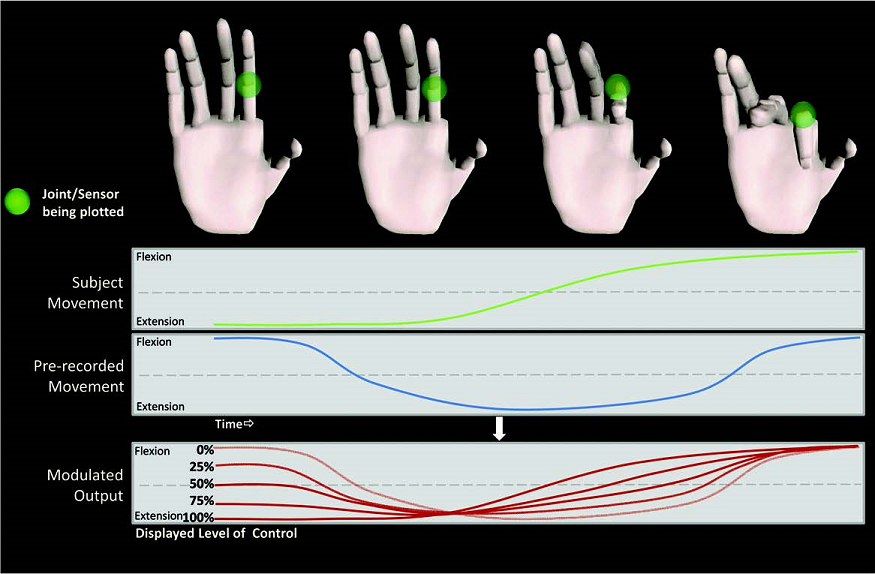Collaborators
Project Brief
For voluntary motor control to occur, normal individuals must have a sense of ownership over the effector (i.e. their hand in a voluntary grasp), and a sense of agency (i.e. the hand movement was initiated by them). In cases such as orticobasal degeneration, alien limb syndrome, and various other psychogenic movement disorders, patients experience various movements which they judge to be involuntary, or performed by an outside agent (referred to as passivity phenomenon in the setting of schizophrenia and manifests as auditory or visual hallucinations). Such pathologic conditions are hypothesized to occur due to an impaired sense of agency (SA). Our collaborators in NINDS initiated a study to identify the underlying network for self-agency by altering a normal subject's sense of control or agency with the use of a virtual reality device (Cyberglove, Immersion Corp) in the fMRI environment. While wearing the Cyberglove and undergoing fMRI scans, the subject would touch their fingers together while watching the virtual hand on a computer monitor. The virtual hand movements would be modified by varying degrees such that the virtual hand motions do not match the actual hand motions, thus modulating the subject’s sense of self-agency.
However, the MRI environment induces significant noise on the electronics of the virtual reality glove system, causing the virtual hand to display constant ’tremors‘ and unnatural finger motions. These anomalies in the displayed virtual hand needed to be eliminated to help ensure the subject’s sense of agency was maintained, especially when viewing the unmodified (i.e., subject’s actual finger position or motion) virtual hand. SPIS engineers evaluated the noise and developed signal processing algorithms to remove the MRI-induced noise allowing the virtual hand to more accurately reflect actual hand motions or display realistic modified hand motions. In addition, SPIS engineers developed the software to modulate the virtual hand motions per the needs of the researchers. The success of the fMRI study led to a follow-up study by another NINDS researcher which used EEG in place of fMRI.

Tech Transfer
Non-Disclosure Agreement: Signed with Immersion Corp
